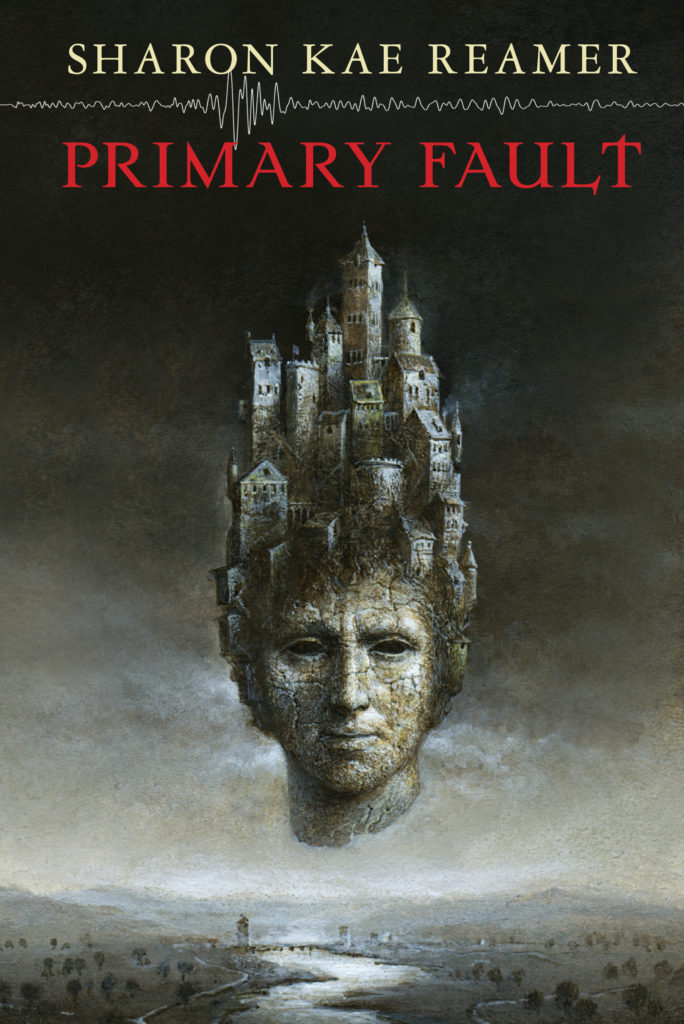 When I first started writing Primary Fault, Book 1 of 5 of the Schattenreich series, I only had a vague idea of the dimensions of this as yet undiscovered land. Equally uncertain was what it looked like, smelled like or felt like. The population of this supernatural realm, that I named Ande-dubnos for the Breton (a Celtic language spoken in the Brittany region of France) word for Otherworld, was also relatively unknown.
When I first started writing Primary Fault, Book 1 of 5 of the Schattenreich series, I only had a vague idea of the dimensions of this as yet undiscovered land. Equally uncertain was what it looked like, smelled like or felt like. The population of this supernatural realm, that I named Ande-dubnos for the Breton (a Celtic language spoken in the Brittany region of France) word for Otherworld, was also relatively unknown.
Are there fairy folk in Ande-dubnos? If so, are they dangerous? Yes. And yes. But first…
I made a conscious decision, necessitated by the nature of the human/mortal characters in the Schattenreich series (Germanic-Breton heritage, a long and complicated history) to concentrate on the western European, continental Celtic, Late Iron Age culture. Later books in the series address the (possible) syncretization of Germanic-Celtic culture in the Rhineland (see, for example, Hilda Ellis Davidson’s excellent Myths and Symbols of Pagan Europe), since much of the story throughout all five books takes place there.
This approach seemed reasonable. Until I began to appreciate how little is known about continental Celtic religion (not to mention the Germanic religion, as opposed to Norse of which a lot more is known. See, for example, Rudolf Simek’s Religion und Mythologie der Germanen).
It was disappointing to realize that basically the only information that exists about druids, the high priests of the Late Iron Age Celtic religion, was written by their conquerors, the Romans, in particular, Julius Caesar (de bello Gallico).
There is still a lively debate among historians, archeologists, and linguists about whether the druids really existed. I wanted druids. I needed them for the story I had decided to tell. So I used this uncertainty, made it a part of the skepticism/agnosticism my ‘druids’ had of their own religion.
But that wasn’t the only problem. While there is a vibrant history of the fairy folk in Ireland and the U.K., what mythology exists still in western Europe has been highly diluted, often reduced to folk tales and superstitions, by the relatively rapid, near-total Christianization of the continent.
There are inscriptions, of course, and these continued even in Gallo-Roman times, a faint but persistent memory of a culture that had been nearly completely obliterated by the Roman conquest of the continent.
There is also the problem that the Celts wrote nothing down. Absolutely, really, nothing. At least nothing that has been found.
So populating Ande-dubnos with deities and fairy folk was a challenge.
I first subdivided Ande-dubnos into four main subrealms and then began to populate them.
1) There is the Schattenreich, which belongs to a particular family of humans (a blood legacy born of a geis and Cathubodua’s curse).
2) There is Ande-dubnos proper, a venerable forest whose borders are mutable, and this sub-realm is ruled by Cernunnos, which means, roughly, ‘the horned one’. He is documented on several tens of inscriptions, notably the Gundestrup cauldron, where he is pictured in a Buddha-like pose, with horns, and holding a torc, a necklace typically worn by Celtic chieftains/aristocrats, an open circle usually made of gold.
Cernunnos shares his realm with (among a few, select others) Cathubodua (translatable as ‘battle crow’), a triple goddess of war and kingship, perhaps equivalent to the Irish Mórrígan or Badb Catha. She is known from a single inscription. Cathubodua is potent and quick to anger, and she leveled a curse against the ancestors of the von der Lahn family formulated to last for nine times nine generations. Some serious stuff. Cathubodua’s curse plays an important role in the Schattenreich series and shapes the attitudes and actions of some of the characters.
3) The Between Lands is a shadowy, dangerous realm populated by a number of supernatural creatures, and it has not, at this time, been fully explored by the humans who have access to the Otherworld. Melusine, half-fairy, perhaps half-dragon, and the presumed progenitor of French, English, and Cypriot royal houses, inhabits the Between Lands. Her duty is to preserve the Dreams, her special provenance, that exists there, and in which she enlists the help of humans. They only have to die first to get there.
4) The Lands Beyond are ruled by Ankou, who exists as a (mostly medieval) figure in Breton folk tales as a psychopomp who arrives with his horse and creaky wagon to collect the newly dead. I’ve re-styled him as Lord of the Dead with his own realm of the Otherworld. Ankou is ancient and powerful, and there are secretive hints of older names. Some hypothesize he even created Ande-dubnos. While writing the series, Ankou rose to prominence, and has remained a central important figure in the Schattenreich series.
Ande-dubnos, the Otherworld, is a magical world. Most humans do not have access to it. Those that do must learn how to cross the veil from the waking world (our reality) into the Otherworld. At the time that Primary Fault takes place, this is a one-way border, closed to the denizens of the Otherworld, prohibiting them from accessing the waking world. And that is a good thing.
The rank and file population of Ande-dubnos are called the Tud, the Breton word for folk. They are (possibly) immortal, supernatural beings. Some of them, many in fact, have some mortal, human blood. The Tud are the fairy folk of Ande-dubnos. They come in different sizes and shapes. Most of them are also shape-shifters. And most of them crave human blood. It gives them sustenance and helps them connect to the Dreams, which they also crave.
It is best to avoid the Tud when traveling in Ande-dubnos. Unless the traveler has powerful magic with which to fight them off. Or is willing to trade. But beware of making deals with any of the denizens of Ande-dubnos, because the price can indeed be very costly.
![]()
About Sharon
Now a full-time writer living near Cologne, Sharon Kae Reamer’s speculative fiction is inspired by her participation in various archeoseismology projects during her twenty-something years as a senior scientist at the University of Cologne. Locations that include the Praetorium and medieval Jewish settlement in Cologne, ancient Tiryns in Greece, and Greek ruins in Selinunte, Sicily, provide perfect backdrops for creating fantasy stories rich with history and mythology, such as her Immortal Guardian and Schattenreich Mystery novelette series and her five-book Schattenreich novel series.
Her love for mixing and mashing science fiction and fantasy continues unabated. Night Shepherd, in the Schattenreich universe is a spinoff (one of many) of her soon-to-be-published first novel in The Sundered Veil series, a further conception of science fantasy.
Sharon still pursues archeoseismology projects. She also cooks daily (German-English), gardens (chaotically, at best), knits (badly), does needlepoint (rather well) and reads (everything) all the damn time.
And, of course, she has cats.
Find Sharon
Website ~ Twitter ~ Pinterest ~ BookBub ~ Amazon ~ Goodreads
![]()
Primary Fault is available for a limited time in The Realm of Faerie bundle. Bundle buyers have a chance to donate a portion of the purchase price to the charities Mighty Writers and Girls Write Now.
Enter the Realm of Faerie, a world of beauty, danger, and enchantment. But remember the legends if you want to make it back home again…

Sign up for the Blackbird Publishing newsletter!

